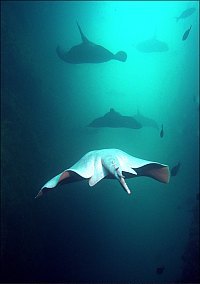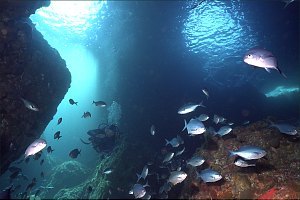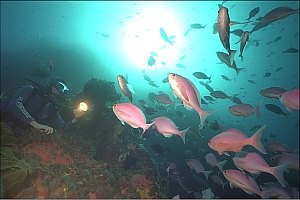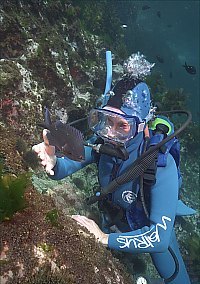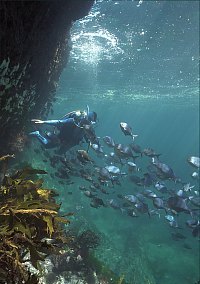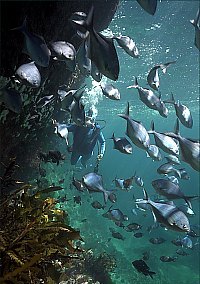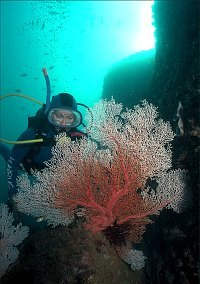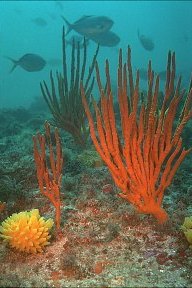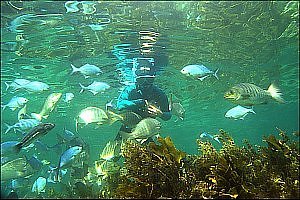 f010206: A snorkeldiver is feeding fish at the Goat Island
marine reserve, New Zealand. Above the brown seaweed, the frozen peas attract
fish in large numbers, particularly blue maomao, snapper and parore.. Feeding
the fish is a practice, now strongly discouraged because it may change
their behaviour.
f010206: A snorkeldiver is feeding fish at the Goat Island
marine reserve, New Zealand. Above the brown seaweed, the frozen peas attract
fish in large numbers, particularly blue maomao, snapper and parore.. Feeding
the fish is a practice, now strongly discouraged because it may change
their behaviour. |
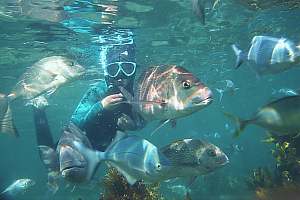 f010221: A snorkeldiver finds herself surrounded by the friendly
fishes of Goat Island marine reserve, New Zealand. In the sheltered shallows
of Goat Island it is easy to befriend the many fishes: snapper, blue maomao,
trevally and more.
f010221: A snorkeldiver finds herself surrounded by the friendly
fishes of Goat Island marine reserve, New Zealand. In the sheltered shallows
of Goat Island it is easy to befriend the many fishes: snapper, blue maomao,
trevally and more. |





